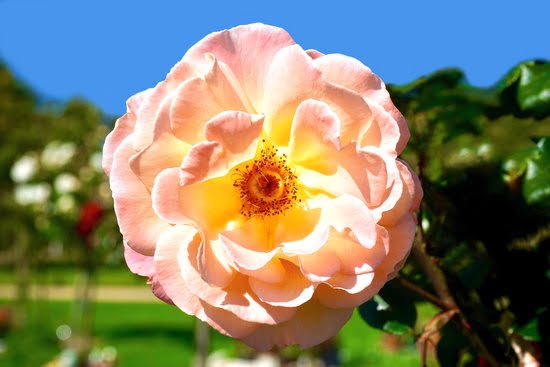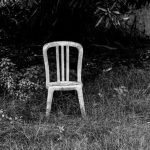Are you looking to create a beautiful and thriving garden in the shade? In this article, we will explore the concept of shade gardening and the importance of including perennial flowers in your design plans. Whether you are a seasoned gardener or just starting out, understanding how to layout perennial flower shade garden design plans is essential for creating a stunning outdoor space that flourishes in low light conditions.
Shade gardening involves working with specific considerations and constraints. Understanding the unique needs of plants in shaded areas is crucial for successful garden design. Perennial flowers play a vital role in adding color, texture, and visual interest to a shaded garden, making them an essential element when planning the layout.
In this section, we will lay the groundwork for exploring how to create a beautiful and sustainable shade garden through well-thought-out design plans. We will delve into the world of perennial flowers, highlighting their significance in transforming any shady spot into a vibrant and flourishing oasis. By considering all aspects of shade gardening as well as incorporating perennial flowers into your design, you can create an inviting and visually captivating garden that thrives year after year.
Understanding the fundamentals of shade gardening and recognizing the significance of including perennial flowers will set the stage for developing effective layout and design plans. Let’s embark on this journey to discover how to turn shaded spaces into picturesque landscapes filled with timeless beauty.
Assessing Your Garden’s Shade
When it comes to designing a shade garden, the first step is to accurately assess the levels of shade in your garden. Understanding the specific type of shade present will help you choose the right perennial flowers and plan an effective layout for your garden.
Identifying the Type of Shade in Your Garden
There are various types of shade that can affect plant growth, such as dappled shade, partial shade, full shade, or dry shade. Dappled shade refers to areas where sunlight filters through overhead branches, creating patches of light and shadow. Partial shade receives sun for only part of the day, while full shade areas receive no direct sunlight.
Dry shade occurs under trees or shrubs that absorb most moisture from the soil, leaving little for neighboring plants. Identifying which type of shade prevails in your garden will help you select perennial flowers that thrive in those conditions.
Understanding the Specific Needs of Perennial Flowers in Different Levels of Shade
Different perennial flowers have varying requirements when it comes to sunlight exposure. Some may tolerate dappled or partial shade, while others thrive best in full shade or dry conditions. Understanding these specific needs will allow you to make informed decisions when choosing and placing plants within your garden.
Tips for Measuring Sunlight and Shade in Your Garden
To accurately assess the levels of sunlight and shade in your garden, consider using a simple tool like a sun calculator or smartphone app designed for this purpose. These tools can help measure the amount of light reaching different areas at various times during the day. Additionally, taking note of how long each area receives direct sun or remains shaded will provide valuable information as you plan and design your perennial flower layout.
Selecting the Right Perennial Flowers
When it comes to creating a beautiful and thriving shade garden, choosing the right perennial flowers is crucial. Here are some tips for selecting the best perennial flowers for a shade garden:
- Consider the level of shade: Different perennial flowers have varying levels of tolerance to shade. Some may thrive in dappled or partial shade, while others can handle deep, full shade. It’s important to assess the specific shade conditions in your garden before selecting your plants.
- Choose a variety of colors, shapes, and heights: One way to add visual interest to your shade garden is by incorporating perennial flowers with diverse colors, shapes, and heights. This not only creates a more visually appealing garden but also ensures that there is constant interest throughout the growing season.
- Factor in bloom times: To ensure that your shade garden has continuous blooms and year-round interest, select perennial flowers with varying bloom times. By doing so, you can enjoy a succession of blooms from early spring to late fall.
Incorporating these factors into your selection process will help you create a well-balanced and visually appealing perennial flower garden that thrives in the shade.
Remember that each plant has its own specific needs, including soil requirements and care instructions. Before making your final selections, be sure to research each perennial flower to ensure that it is suitable for the conditions in your garden. With thoughtful consideration and planning, you can create a stunning and flourishing shade garden filled with beautiful perennial flowers.
Planning the Layout
When it comes to creating a beautiful shade garden with perennial flowers, planning the layout is essential for a successful and visually appealing space. Here are some tips and considerations for mapping out your garden:
- Assess Your Garden Space: Start by evaluating the size and shape of your garden area. Consider factors such as existing trees, structures, and natural elements that may impact sunlight and shade levels in different areas of your garden.
- Arrange Perennial Flowers: Once you have a clear understanding of your garden’s shade patterns, consider how to arrange your perennial flowers accordingly. Place taller plants towards the back or center of the garden bed, and shorter ones towards the front or edges to create depth and visual interest.
- Incorporate Pathways and Focal Points: Think about adding pathways or stepping stones to navigate through the garden. These not only provide access for maintenance but also add structure to the design. Additionally, consider incorporating focal points such as a bench, fountain, or decorative accents to create focal points within your shade garden.
By carefully planning out the layout of your shade garden, you can create a well-organized and visually appealing space that showcases the beauty of perennial flowers while making the most of shaded areas in your yard. Remember that every decision you make will influence how each plant interacts with one another along with its surroundings.
Designing for Year-Round Interest
Integrating Seasonal Blooms
When planning a perennial flower shade garden, it’s essential to consider the seasonal blooming patterns of the selected plants. By strategically choosing a variety of perennials with different bloom times, you can ensure continuous color and visual interest throughout the year. Early spring bloomers such as bleeding hearts and hellebores can be followed by summer favorites like hostas and astilbes. Additionally, late-season bloomers such as Japanese anemones and turtlehead can provide color well into the fall months.
Using Foliage and Texture
In addition to relying solely on blooms for visual appeal, incorporating foliage and texture into your shade garden design adds depth and interest. Select perennials with unique leaf shapes, sizes, and colors to create contrast within the garden. For example, ferns offer delicate fronds that provide a softness to the landscape, while plants like coral bells or lungworts add splashes of vibrant color through their foliage.
Selecting Perennial Flowers With Varying Bloom Times
To achieve year-round interest in your shade garden, it’s important to carefully select perennial flowers with varying bloom times. By doing so, you can ensure that there is always something in bloom regardless of the season. Mixing early, mid, and late blooming varieties will guarantee that your garden remains visually appealing throughout the year. Additionally, incorporating evergreen perennials or those with attractive seed heads ensures that even during dormant periods, there is still visual interest within the space.
Companion Planting
Creating a balanced ecosystem within your shade garden is essential for maintaining plant health and overall garden vitality. By pairing certain perennial flowers with companion plants that have similar light, water, and soil requirements, you can optimize the growing conditions for all species involved. For example, integrating groundcover plants like foamflowers or coralbells with taller perennials can help conserve soil moisture and suppress weed growth while adding visual interest through contrasting foliage textures.
In addition to enhancing the health and vigor of your shade garden, companion planting also supports biodiversity by attracting beneficial insects and pollinators. Perennials such as bleeding hearts and lungworts naturally attract bees and butterflies when planted alongside suitable companions like hellebores or tiarellas. This symbiotic relationship between different plant species contributes to a thriving ecosystem that’s beneficial for both the plants themselves and the wildlife they attract.
| Companion Plants | Benefit |
|---|---|
| Ferns | Natural pest control; Visual appeal |
| Astilbes | Moisture conservation; Complement perennial flowers |
| Heucheras | Compatible light and soil conditions; Attracts pollinators |
Maintenance and Care
Caring for perennial flowers in a shade garden is essential to ensure they thrive and continue to add beauty to your outdoor space. Proper maintenance and care involve regular attention to watering, fertilizing, pruning, and managing potential pests and diseases.
Watering is crucial for the health of perennial flowers, especially in a shade garden where moisture levels can vary. It’s important to water consistently, ensuring that the soil doesn’t dry out completely between waterings. Additionally, using mulch can help retain moisture in the soil, reducing the frequency of watering needed.
Fertilizing is another key aspect of maintaining perennial flowers in a shade garden. Using a balanced fertilizer specially formulated for flowering plants can provide the necessary nutrients for healthy growth and abundant blooms. However, be mindful not to over-fertilize as this can lead to excessive foliage growth at the expense of blooms.
Pruning and deadheading are essential tasks for maintaining the appearance of perennial flowers in a shade garden. Regularly removing spent blooms not only keeps the garden looking tidy but also encourages continuous blooming. Each plant may have specific pruning needs, so it’s important to research individual care guidelines for the species in your garden.
| Aspect of Maintenance | Tips |
|---|---|
| Watering | Water consistently; use mulch to retain moisture. |
| Fertilizing | Use balanced fertilizer; avoid over-fertilization. |
| Pruning & Deadheading | Regularly remove spent blooms; research individual care guidelines. |
Showcasing Successful Shade Garden Designs
In conclusion, designing a shade garden with perennial flowers can bring an abundance of beauty and interest to your outdoor space. By carefully assessing the type of shade in your garden and selecting the right perennial flowers, you can create a stunning and vibrant landscape. Planning the layout is essential for a cohesive and visually appealing garden, incorporating pathways, focal points, and borders to enhance the overall design.
Additionally, designing for year-round interest by integrating seasonal blooms and using foliage and texture can ensure that your shade garden remains visually captivating throughout the year. Companion planting also plays a significant role in creating a balanced ecosystem within your garden space, allowing perennial flowers to thrive alongside compatible plants while minimizing pests and diseases.
Lastly, by showcasing successful shade garden designs, you can gain inspiration for incorporating perennial flowers into your own garden layout. Real-life examples of stunning shade gardens serve as a testament to the beauty and diversity that can be achieved when designing with perennial flowers in shaded areas. With proper maintenance and care, your shade garden filled with perennial flowers can become a captivating oasis for both you and local wildlife to enjoy.
Frequently Asked Questions
How Do You Arrange Perennial Flower Beds?
Perennial flower beds can be arranged by considering the height, bloom time, and color of the flowers. Taller plants should be placed at the back with shorter ones in front to create a layered look. It’s also important to choose plants with varying bloom times to ensure continuous color throughout the season.
How Do You Organize a Shade Garden?
Organizing a shade garden involves selecting plants that thrive in low-light conditions. This may include ferns, hostas, and astilbes. It’s also important to consider the different levels of shade present in the garden and choose plants accordingly. Additionally, incorporating hardscaping elements like paths or seating areas can add interest to the space.
How Do You Plan a Flower Garden Bed Layout?
Planning a flower garden bed layout requires taking into account factors such as sun exposure, soil quality, and mature plant size. It’s important to group plants with similar water and sunlight needs together and consider how they will look when they reach their full size. Creating curved or flowing borders can also add visual appeal to the overall design.

Welcome to my gardening blog! I am passionate about plants and enjoy sharing my knowledge and experiences with others. In this blog, I will write about everything related to gardening, from tips on how to get started to updates on my own garden projects.





